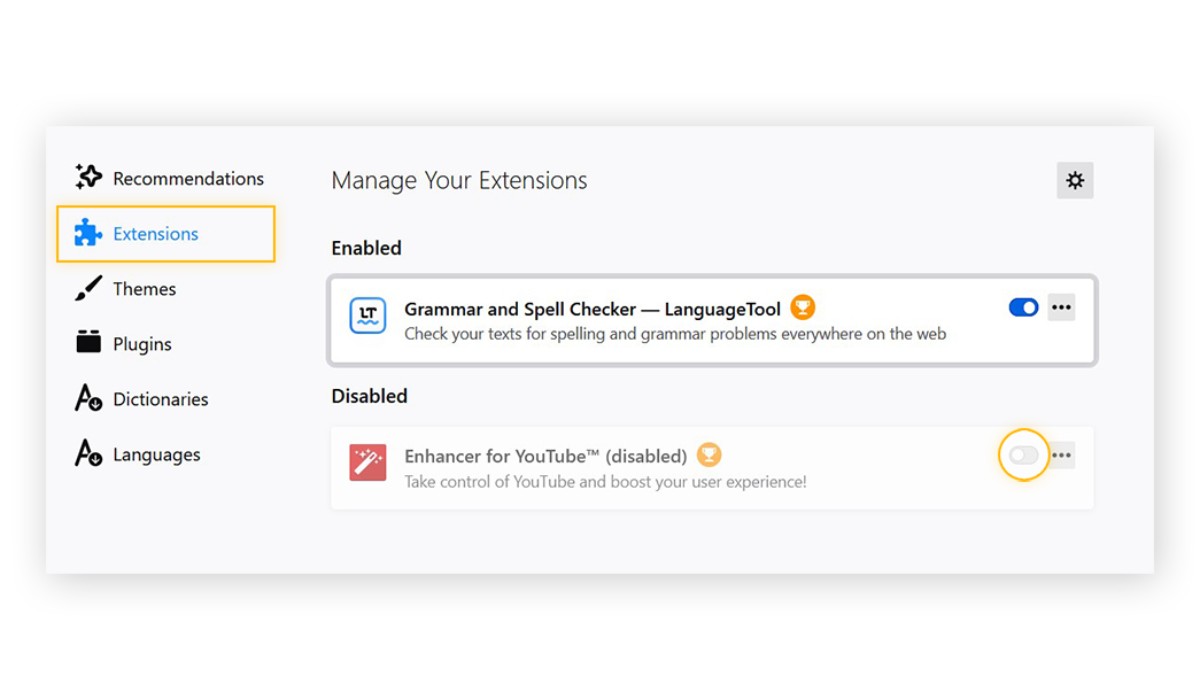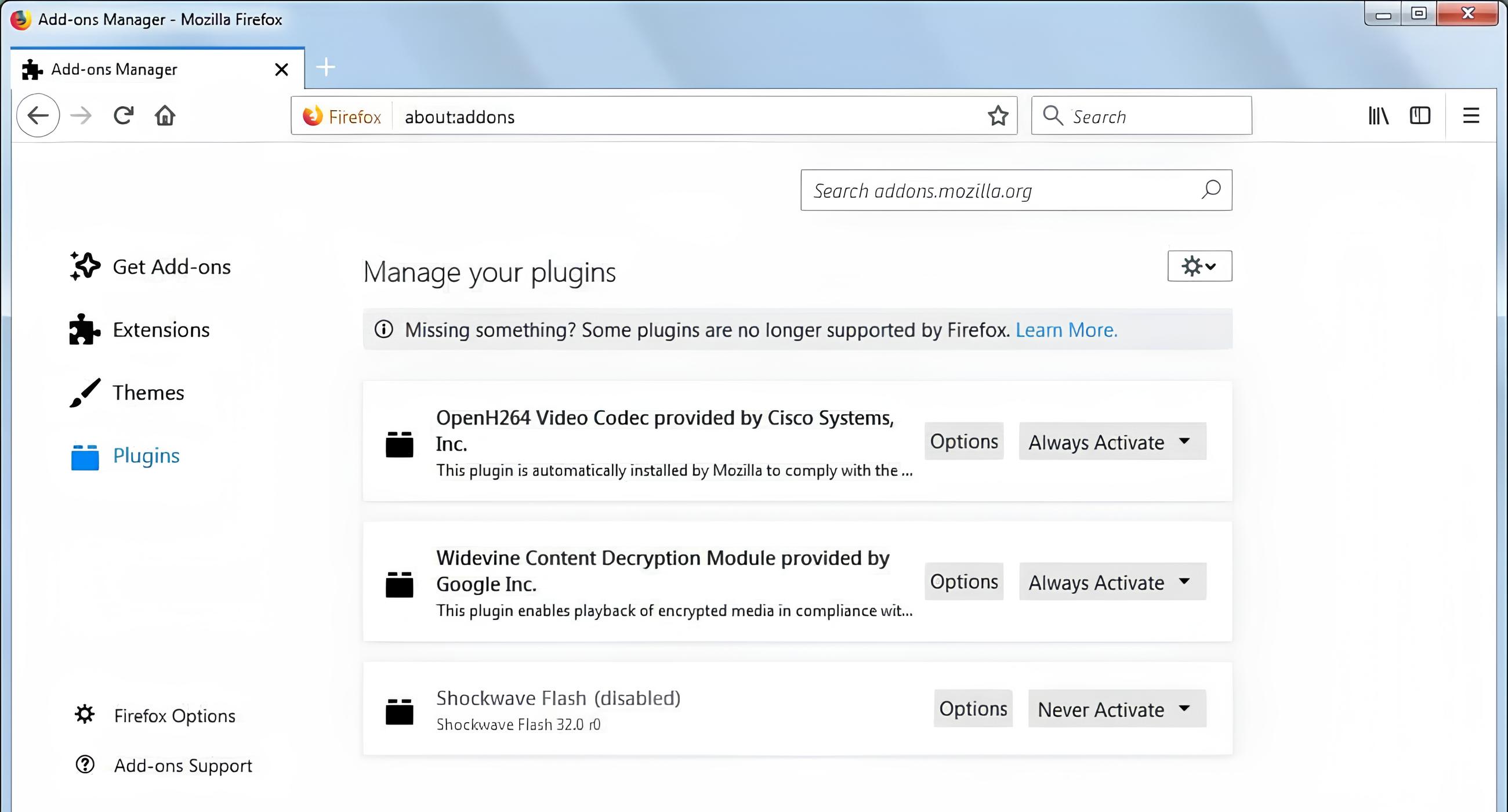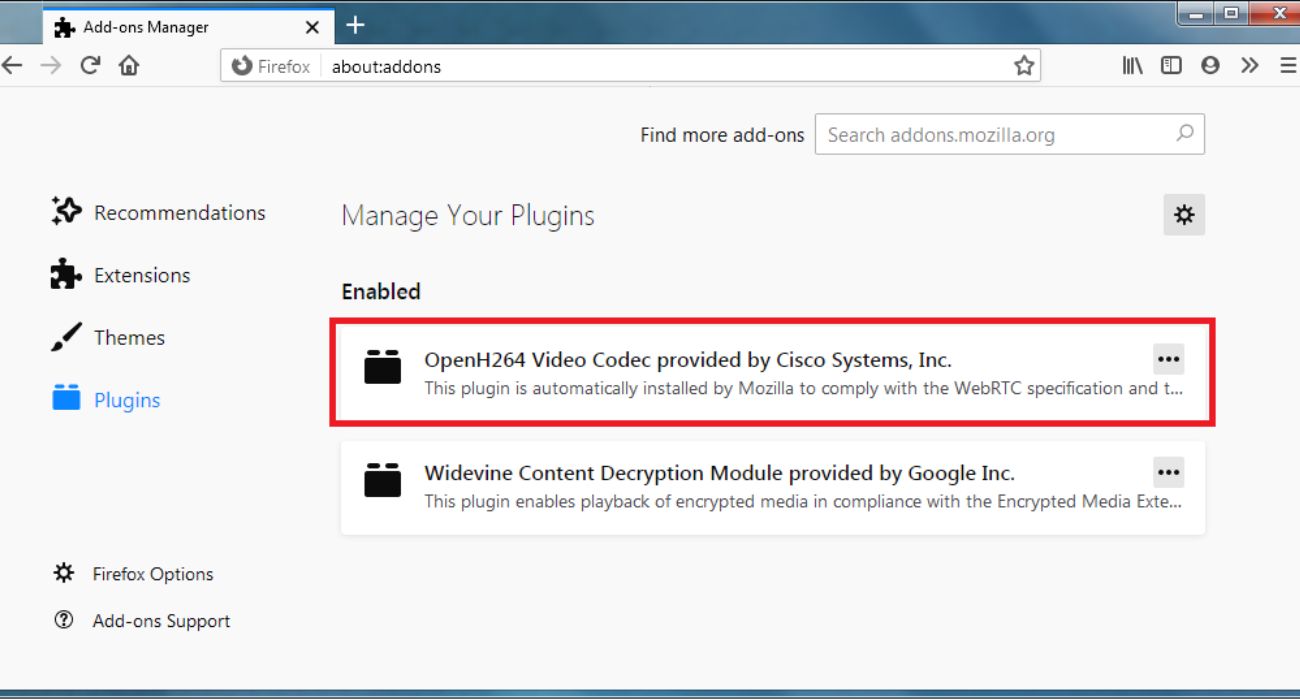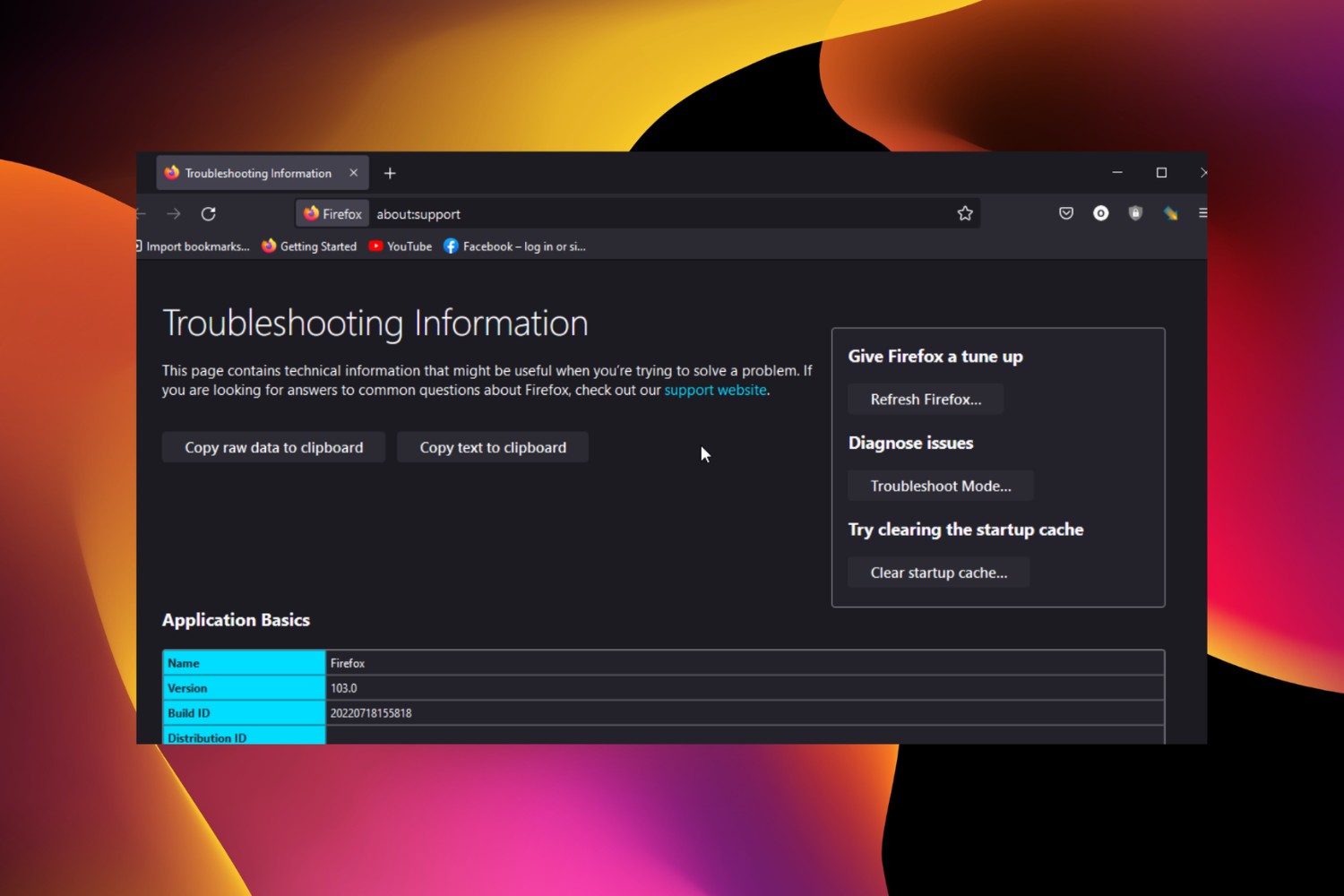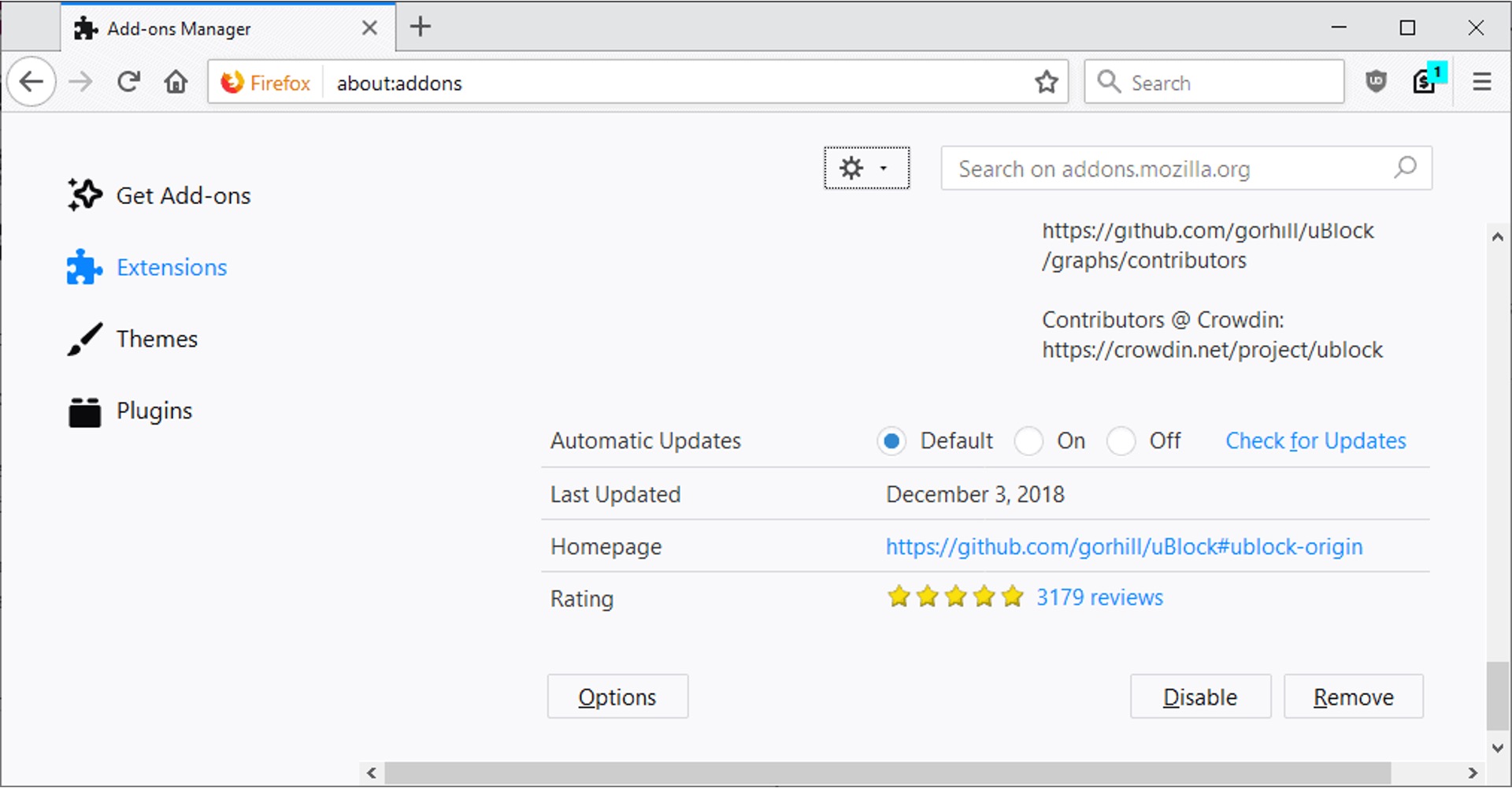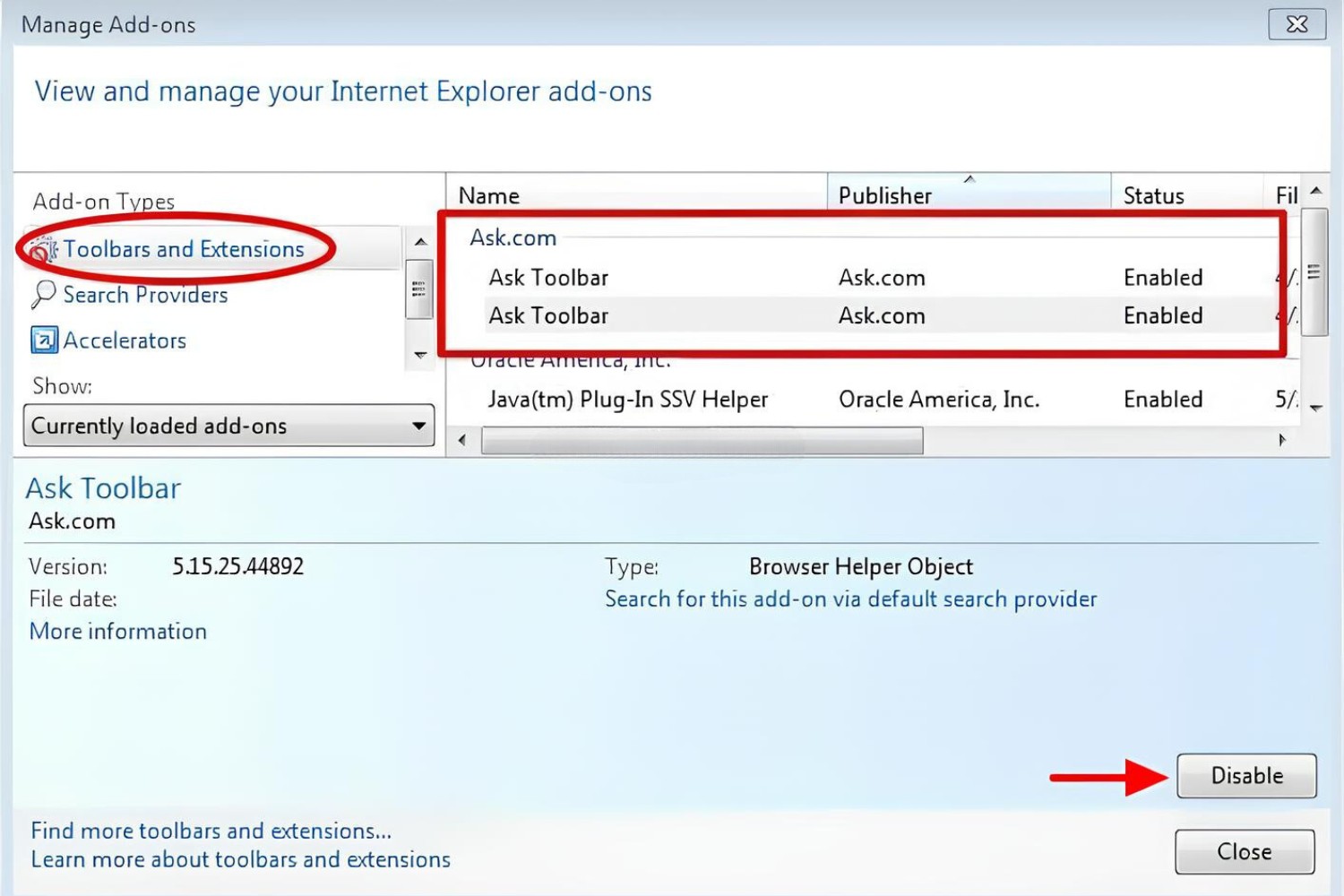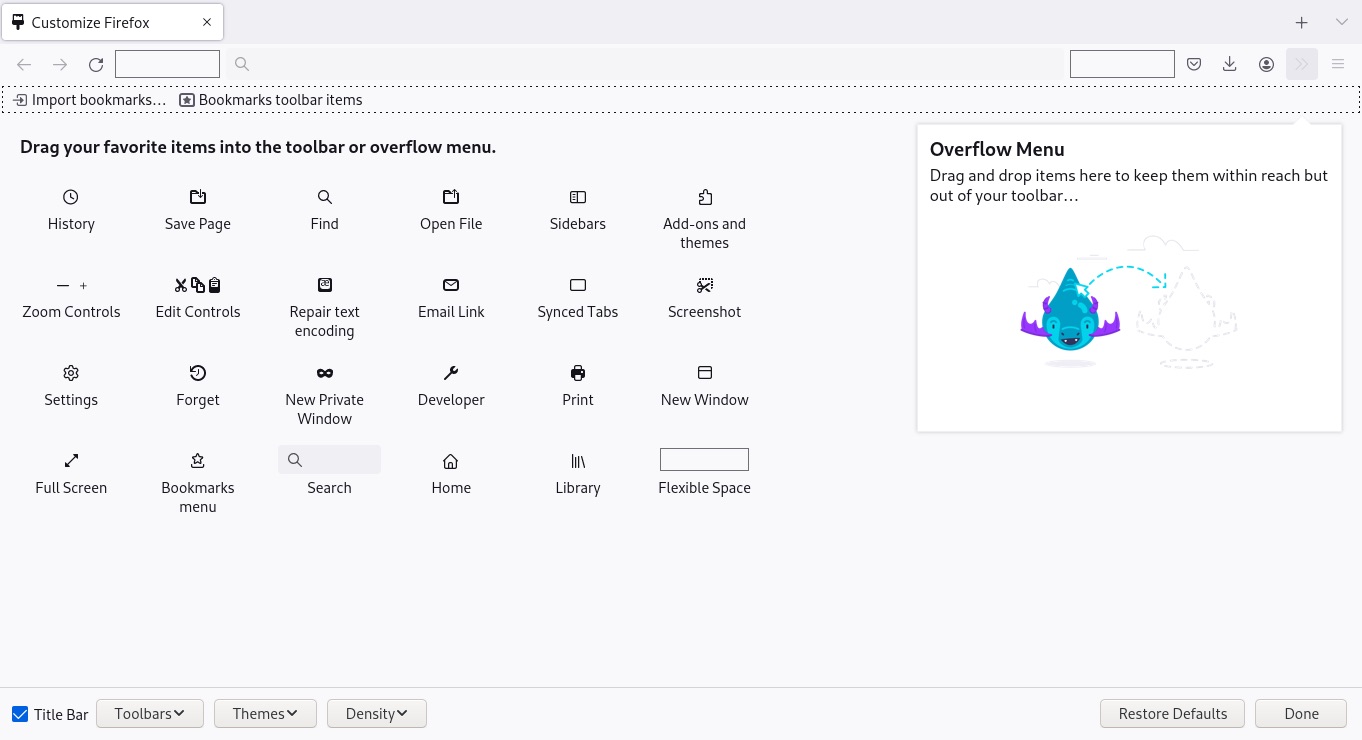Introduction
Removing a plugin from your Firefox browser can help improve its performance and security. Over time, you may find that certain plugins are no longer necessary or may even pose potential risks to your browsing experience. Whether you're looking to streamline your browser's functionality or address security concerns, knowing how to remove a plugin from Firefox is a valuable skill for any user.
Plugins, also known as add-ons or extensions, are additional software components that enhance the capabilities of your web browser. While some plugins provide useful features such as ad blockers, password managers, or language translators, others may be outdated, redundant, or even malicious. By understanding the process of removing a plugin from Firefox, you can ensure that your browsing experience remains smooth, secure, and tailored to your specific needs.
In this guide, we will walk you through the step-by-step process of removing a plugin from Firefox. Whether you're a seasoned Firefox user or just getting started with this popular browser, you'll find that removing plugins is a straightforward task that can significantly enhance your browsing experience. So, let's dive in and explore how you can effectively manage your Firefox plugins to optimize your browsing environment.
Step 1: Open Firefox
To begin the process of removing a plugin from Firefox, you'll first need to open the browser on your computer. Whether you're using a Windows PC, Mac, or Linux system, launching Firefox is typically a simple and familiar task. Here's how you can open Firefox on different operating systems:
Windows:
- If you're using a Windows computer, you can open Firefox by clicking on the Start menu located at the bottom left corner of your screen. From there, you can either scroll through the list of installed applications or type "Firefox" into the search bar to quickly locate and launch the browser.
Mac:
- For Mac users, opening Firefox is as easy as clicking on the Applications folder in the Dock, locating the Firefox icon, and then double-clicking to launch the browser. Alternatively, you can use Spotlight Search by pressing Command + Spacebar, typing "Firefox," and hitting Enter to open the browser.
Linux:
- If you're using a Linux-based operating system, you can typically find Firefox in the applications menu or launcher. Depending on your specific Linux distribution, you may also be able to open Firefox using the terminal by entering the command "firefox" and pressing Enter.
Once you've successfully opened Firefox, you're ready to proceed to the next step in removing a plugin from the browser. With Firefox up and running, you can now access the Add-ons Manager to manage your installed plugins and extensions effectively.
Step 2: Access the Add-ons Manager
Accessing the Add-ons Manager in Firefox is a fundamental step in the process of removing a plugin from the browser. The Add-ons Manager serves as a centralized hub where you can view, manage, and customize the various extensions, themes, and plugins that are installed in your Firefox browser. By navigating to this essential tool, you gain the ability to review the full list of your browser's add-ons and make informed decisions about which ones to keep, disable, or remove.
To access the Add-ons Manager in Firefox, you can follow these simple steps:
-
Open the Menu: At the top-right corner of the Firefox window, you'll find an icon consisting of three horizontal lines stacked on top of each other. This is the Menu button. Click on it to open the main menu of Firefox.
-
Select Add-ons: Within the menu, you'll see a variety of options for customizing and managing your browser. Look for the "Add-ons" option, which is represented by a puzzle piece icon. Click on "Add-ons" to proceed to the Add-ons Manager.
-
Navigate to the Add-ons Manager: Upon selecting "Add-ons," a new tab will open within the Firefox browser, displaying the Add-ons Manager. Here, you'll find different categories such as Extensions, Themes, and Plugins, each providing a comprehensive view of the corresponding add-ons installed in your browser.
Once you've successfully accessed the Add-ons Manager, you'll be able to explore the full range of plugins and extensions that are currently integrated into your Firefox browser. This includes the specific plugin that you're looking to remove. By gaining visibility into your installed add-ons, you can make informed decisions about which ones to manage or remove, empowering you to tailor your browsing experience to your preferences and security needs.
With the Add-ons Manager now accessible, you're ready to proceed to the next step of finding the plugin that you wish to remove from Firefox. This involves identifying the specific plugin within the Add-ons Manager and initiating the removal process, which we'll explore in detail in the following step.
Step 3: Find the Plugin
After accessing the Add-ons Manager in Firefox, the next crucial step in removing a plugin from the browser is to locate the specific plugin that you intend to remove. The Add-ons Manager provides a comprehensive view of all installed extensions, themes, and plugins, making it easy to identify and manage individual components. Here's how you can effectively find the plugin you wish to remove:
-
Navigate to the Plugins Section: Within the Add-ons Manager, locate and click on the "Plugins" tab. This section is specifically dedicated to displaying all the plugins that are currently integrated into your Firefox browser. By selecting the "Plugins" tab, you'll gain immediate access to a list of all installed plugins, including those that are active, inactive, or outdated.
-
Review the List of Plugins: Once you're in the Plugins section, take a moment to review the list of plugins displayed. You'll see the names and icons of the plugins, along with essential details such as their status and the corresponding actions you can take. This overview allows you to quickly scan through the installed plugins and locate the specific one that you're looking to remove.
-
Identify the Targeted Plugin: With the list of plugins in view, identify the plugin that you wish to remove from Firefox. You can typically recognize the plugin by its name, icon, or description. If you're unsure about a particular plugin, you can click on it to access more detailed information, including its functionality, version, and permissions.
-
Confirm the Decision: Before proceeding with the removal of the plugin, it's essential to confirm that you've selected the correct one. Double-check the details and ensure that you're targeting the intended plugin for removal. This verification step helps prevent accidental removal of essential plugins and ensures that you're taking the right action.
By following these steps, you can effectively find the plugin within the Add-ons Manager and prepare to initiate the removal process. Once you've successfully identified the targeted plugin, you're ready to proceed to the next and final step of removing the plugin from your Firefox browser.
With the plugin now located within the Add-ons Manager, you're equipped with the necessary information to proceed with the removal process. This brings us to the final step, where we'll explore how to effectively remove the plugin from Firefox, optimizing your browsing environment and enhancing your overall experience.
Step 4: Remove the Plugin
Now that you've successfully located the plugin within the Add-ons Manager, you're ready to proceed with the removal process. Removing a plugin from Firefox is a straightforward task that can be accomplished with just a few clicks, allowing you to streamline your browser's functionality and enhance its performance. Here's how you can effectively remove the plugin from your Firefox browser:
-
Initiate the Removal: Within the Add-ons Manager, navigate to the specific plugin that you wish to remove. Once you've identified the targeted plugin, you'll notice that it is accompanied by an array of actions that you can take. Look for the "Remove" or "Disable" button associated with the plugin. In this case, since you intend to remove the plugin entirely, click on the "Remove" button to initiate the removal process.
-
Confirmation Prompt: Upon clicking the "Remove" button, Firefox will prompt you to confirm the action. This confirmation dialog ensures that you're intentionally removing the plugin and helps prevent accidental deletions. Review the details presented in the confirmation prompt to ensure that you're targeting the correct plugin for removal. If you're certain about your decision, proceed by clicking "Remove" to confirm the action.
-
Plugin Removal: After confirming the removal, Firefox will immediately proceed to remove the selected plugin from your browser. This process is typically swift and seamless, and you'll receive a notification once the removal is successfully completed. The plugin will be uninstalled from Firefox, and any associated settings or preferences will be cleared from the browser, ensuring a clean and streamlined browsing environment.
-
Restart Firefox (If Required): In some cases, removing certain plugins may require you to restart the Firefox browser to finalize the process. If prompted to do so, simply close and reopen Firefox to ensure that the removal of the plugin is fully implemented. This step is essential for ensuring that the browser operates without any remnants of the removed plugin.
By following these steps, you can effectively remove the plugin from your Firefox browser, optimizing its performance and security. With the plugin successfully uninstalled, you'll experience a more streamlined browsing experience, free from unnecessary or outdated extensions. By regularly managing your browser's plugins, you can ensure that Firefox remains tailored to your specific needs, providing a secure and efficient platform for your online activities.
Conclusion
In conclusion, mastering the process of removing a plugin from Firefox empowers users to maintain a streamlined and secure browsing environment. By following the step-by-step guide outlined in this article, you've gained valuable insights into effectively managing your Firefox plugins. From opening the browser and accessing the Add-ons Manager to finding and removing the targeted plugin, each step contributes to optimizing your browsing experience.
Regularly reviewing and removing unnecessary or outdated plugins from Firefox is essential for several reasons. Firstly, it helps enhance the browser's performance by reducing unnecessary resource consumption and potential conflicts between plugins. Additionally, removing unused plugins can contribute to a more secure browsing experience, as outdated or unsupported plugins may pose security risks.
Furthermore, by actively managing your Firefox plugins, you can ensure that your browser remains tailored to your specific needs. This allows you to maintain a clutter-free environment, free from unnecessary extensions that may impact your browsing efficiency. Whether you're a casual user or a seasoned Firefox enthusiast, the ability to remove plugins from the browser is a valuable skill that contributes to a more personalized and secure browsing experience.
As technology continues to evolve, staying vigilant about the plugins and extensions integrated into your browser is crucial. By regularly reviewing and removing unnecessary or potentially risky plugins, you can adapt to the changing landscape of online security and browsing best practices. This proactive approach not only enhances your individual browsing experience but also contributes to a safer and more resilient online ecosystem.
In essence, the process of removing a plugin from Firefox is a simple yet impactful task that empowers users to take control of their browsing environment. By leveraging the insights and techniques shared in this guide, you're well-equipped to manage your Firefox plugins effectively, ensuring a smooth, secure, and personalized browsing experience tailored to your preferences and security needs.







